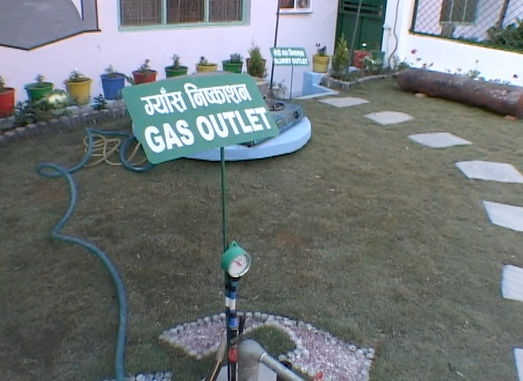Managing Pathological Waste


Placing pathological waste into a biodigester.
In many health care waste management settings handling and disposing of pathological waste is often a serious problem.
Hospital generated pathological waste consists of tissues, organs, body parts, or any combination of items contaminated with blood or bodily fluids. This waste is biohazardous waste capable of spreading disease. Pathological waste must be treated with an abundance of care, with handling kept to an absolute minimum and technicians dressed in appropriate PPE.
While many countries require medical facilities to incinerate or bury pathological waste, HECAF 360 believe that incinerating or burying biohazardous waste actually cause more harm than good, especially in developing nations.
HECAF 360 utilize a much more climate friendly solution – biodigestion.
Biodigestion


Photo: Stringer/HCWH
Custom designed biodigester set up at Kathmandu's Tribhuvan University Teaching Hospital built to accommodate pathological waste
Much of the following content has been lifted (with permission) from a Green Policy Platform Blog post by Ruth Stringer, International Science and Policy Coordinator, Health Care Without Harm.
Her complete blog post can be sourced here.
Synopsis:
Getting rid of infectious organic waste in hospitals through low-tech, sustainable biodigesters not only captures methane gas and turns it into low-cost biogas, but it also reduces air pollution and its impact on climate change.
If not properly disposed of, infectious organic waste – which includes kitchen waste and pathological waste such as placentas – can attract flies, rats and feral animals, all capable of spreading disease. It smells terrible as it decomposes, and generates methane, a powerful greenhouse gas.
In many countries, there are laws that force medical facilities to incinerate placentas and other waste, despite the pollution this process causes. It doesn’t have to be this way.
In fact, there is a safer and more sustainable, as well as low-cost and low-tech, way to dispose of this waste, and even provide environmental benefits when it comes to energy use with less reliance on fossil fuels. That way is through biodigestion.
In the last 10 years, Health Care Without Harm and HECAF 360 of Nepal have been working with biodigester experts to design systems – first in Nepal and then expanding to hospitals in Tanzania and Madagascar – for the very particular waste stream being produced in healthcare.
Dealing with placentas is complicated because they are potentially infectious and because they contain more nitrogen than the bacteria can digest. But there are strategies to overcome this.
Once a well-built biodigester is operational, it can swallow all of the organic waste from a healthcare facility for decades with very little maintenance. The waste – with some added water to keep things moving – flows through the system via gravity, so no pumps or power are needed.

Food waste input

Small scale pathological waste biodigester
After the initial investment has been made, costs are low. In Nepal, we calculated that the gas produced has a value of $20 for every tonne of waste disposed of. This is not enough to repay the construction costs, or to replace all the cooking gas used in the facility, but is a useful side benefit. In one Kathmandu hospital, the staff tea room no longer has to buy cooking gas since they started using the gas from the biodigester.

A useful by-product: the biogas methane
Removing all the organic waste from a facility can eliminate bad smells they cause and the pests that they attract. The digesters are usually buried, as the soil supports and insulates them, so they are grassed over or planted with flower beds, making for a far nicer environment for staff, patients and their visitors.
And most importantly, burning the methane directly from the biodigester has a much smaller impact on the environment than were the waste disposed of in a landfill where the methane is release directly into the atmosphere.

